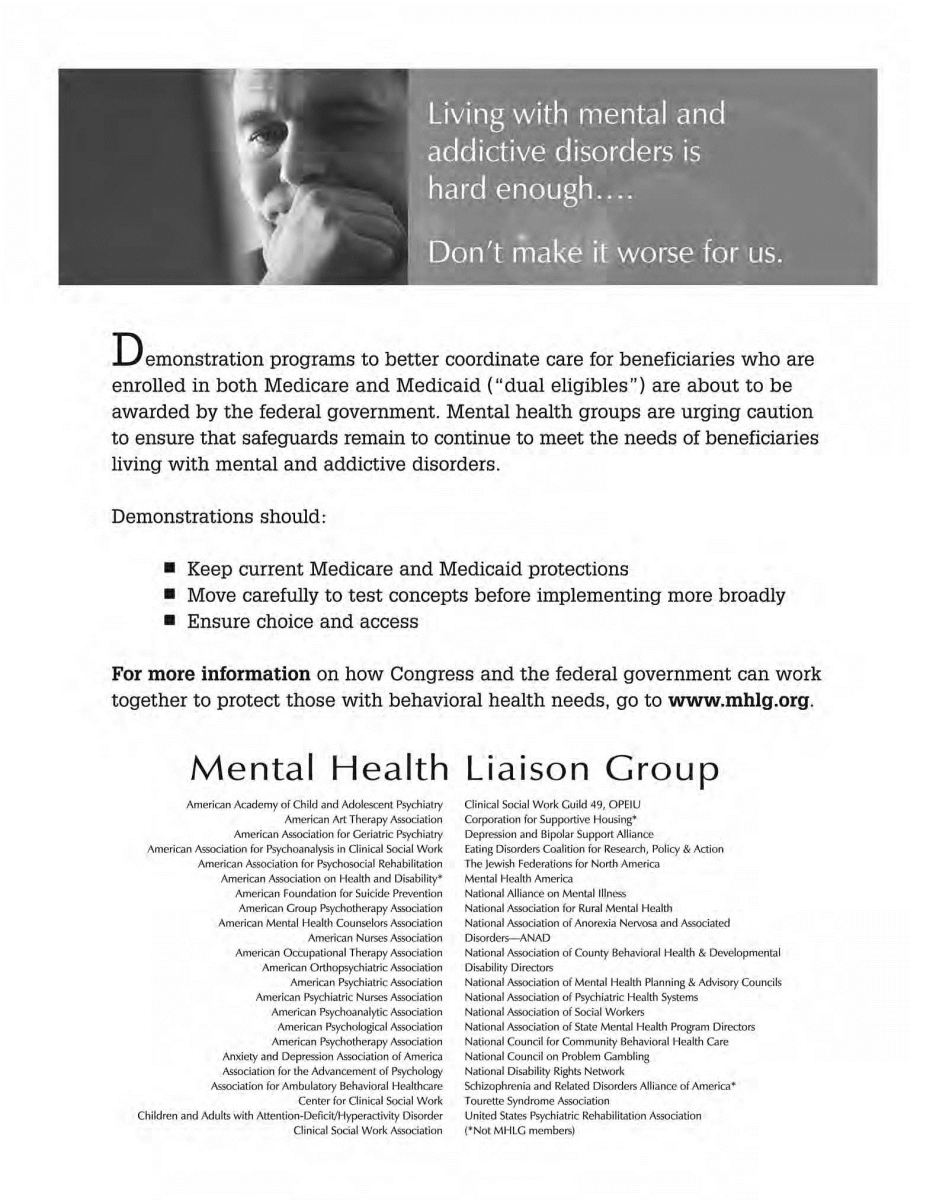High on the association’s advocacy agenda is a priority focus on “ensuring that innovations to coordinate care for individuals eligible for both Medicare and Medicaid (‘dual eligibles’) serve the complex needs of this population and support access to necessary services.”
On January 25, 2012, the Medicare-Medicaid Coordination Office (MMCO) issued a Capitated Demonstration Guidance providing information on the models that will be tested through the Center for Medicare and Medicaid Innovation (CMMI) authority granted in the Affordable Care Act (ACA). These models are designed to “test a new payment and service delivery model to reduce program expenditures under Medicare and Medicaid, while enhancing the quality of care furnished to Medicare-Medicaid enrollees.”
NAPHS believes that all demonstrations need to address four key patient-protection areas:
- Enrollment. A key tenet of the Medicare program is that beneficiaries voluntarily enroll in the program and have choice in their providers, in whether or not they enroll in the Medicare. We strongly believe that all the dual-eligible demonstrations should have a voluntary opt-in enrollment and not an opt-out enrollment.
- Network adequacy. We believe these demonstrations should have an out-of-network option for this population.
- Finance and payment. CMS should ensure that payments not fall below the cost of care.
- Timeline/administration. We suggest that these demonstrations move ahead cautiously, and not until all the features are firmly in place. To avoid unintended consequences, CMS should suggest that states being approved for demonstrations conduct pilot demonstrations in limited geographic areas. When evaluating demonstration proposals for approval, CMS should approve sufficient numbers of both types of demonstrations suggested in the January 2012 Capitated Demonstration Guidance (both the capitated model and the managed fee-for-service model). CMS should also evaluate the capacity of each state to actually implement the major changes that will be required by the demonstrations.
12/19/2013 | MedPAC/MACPAC data book: Beneficiaries Dually Eligible for Medicare and Medicaid (with demographic, expenditure, and healthcare utilization information) |
3/15/2013 | MACPAC Report to Congress on Medicaid and CHIP. (See Chapter 3 on "dual eligibles.") |
8/2/2012 | Mental Health Liaison Group (MHLG) ad on demonstration programs for dual-eligibles (as seen in Politico): "Living with mental and addictive disorders is hard enough...don't make it worse for us" [View] |
7/18/2012 | Mental Health Liaison Group (MHLG) release: "Mental health groups raise concerns about the current structure of dual-eligible demonstrations." Also see a MHLG letter to the Senate Special Committee on Aging |
6/6/2012 | Mental Health Liaison Group letter to CMS on concerns related to dual-eligible demonstrations as they impact individuals with mental illness [View] |
6/1/2012 | MedPAC Chapter 3 on dual eligibles (from A Data Book: Health care spending and the Medicare Program) |
5/24/2012 | Kaiser Commission on Medicaid & the Uninsured: "Geographic Variation in Dual-Eligible Enrollment" (by state) [View] |
3/19/2012 | NAPHS comment letter and position paper on dual-eligible demonstrations sent to CMS Medicare-Medicaid Coordination Office (in response to request for feedback on Massachusetts dual-eligible demonstration). [NOTE: Check periodically online to view additional state demonstrations as they become available for comment.] |
10/11/2011 | Robert Wood Johnson Foundation: Report on "Refocusing Responsibility for Dual Eligibles: Why Medicare Should Take the Lead" |
8/1/2011 | Kaiser Family Foundation Policy Brief: "Proposed Models to Integrate Medicare and Medicaid Benefits for Dual Eligibles: A Look at the 15 State Design Contracts Funded by CMS" [View] |
7/11/2011 | NAPHS comment letter: "Medicare and Medicaid Programs: Opportunities for Alignment Under Medicaid and Medicare" [View] |

